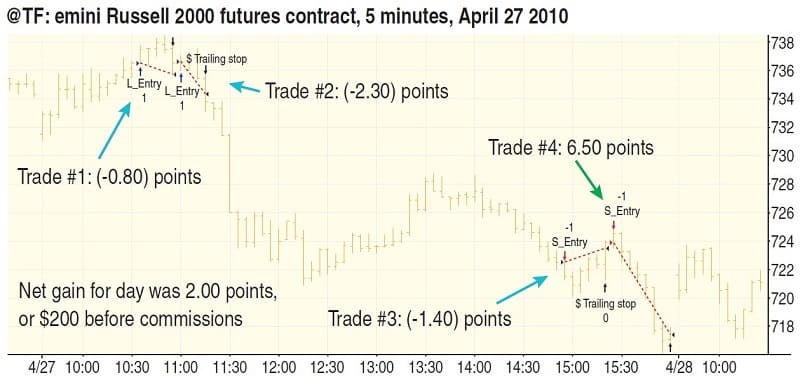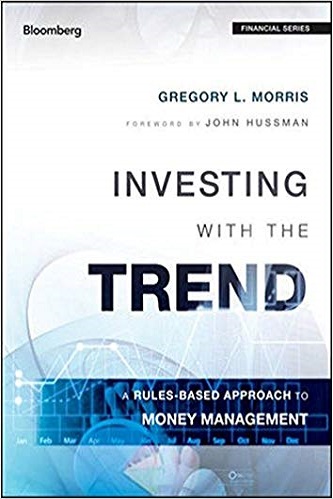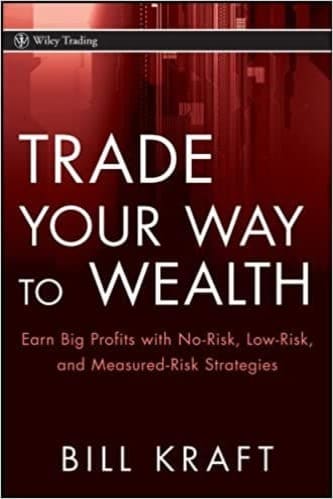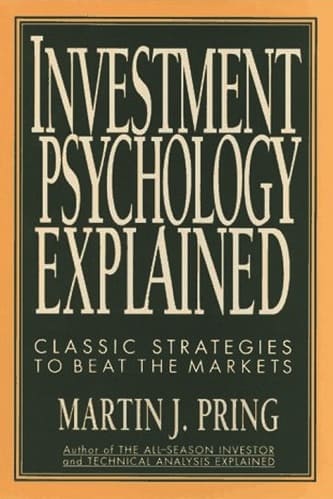Articles
With Trading Systems, Patience Pays Off By Donald W. Pendergast

It’s been said that most traders will abandon an otherwise sound mechanical trading system after only three consecutive losing trades. Those who subscribe to such faulty reasoning usually miss out on the large gains available once the system finally begins to pull out of ordinary drawdown periods. You’ve finally done it. The trading system you’ve purchased or leased (or subscribed to) is ready to be deployed in your trading account. You already know all the key statistics in the system’s backtested and/or historical trade results, including maximum peak-to-valley drawdown, profit factor, average profit per trade, and number of consecutive winning and losing trades, among others. Your futures margin account has more than three times the cash value of the maximum historical peak-to-valley intratrade drawdown, and you feel very comfortable working toward the goal of successful trading with such a system. Even better, you’ve already traded the system’s signals in a real-time simulator and were able to tough it out through a series of minor drawdowns. As you place your first live trade with the system, you smile and say out loud, “What could possibly go wrong? I’ve considered all of the possible contingencies, haven’t I?”
FAMOUS LAST WORDS
The first trade goes okay; you make a few hundred dollars with only a minor intratrade drawdown between initial entry and final stopout. Another trade breaks even. Then a third signal — and another winner. At the end of the trading day you’re up by $275 and are feeling pretty darn proud of yourself. You look at the equity curve of the past year’s backtested results and note that it’s been more than a month since this intraday emini stock index trading system has had more than a $500 closed equity drawdown, but you don’t fret much about that. After all, you say, “The system is in a really good groove and things should continue as they are for some time to come, shouldn’t they?”
MAYBE YOU SHOULDN’T TALK TO YOURSELF QUITE SO MUCH
Somehow, you reassure yourself that you’re going to be staying in the rising equity curve club for the foreseeable future, and with that you turn out the lights and hit the sack for a peaceful night’s rest. The next day, your fabulous emini trading system gives you four trading signals, but something’s gone wrong — the first trade nicked you for a $80 loss, and then the next one extracted another $230 from your margin account. You already knew that the system had five consecutive losers at several times during the past year, so you decide to take the next signal, no matter what. Whack! It’s another 1.40-point loser in the emini Russell — a $143 haircut, including commissions.
Two cups of double-caffeinated coffee and an equal number of jelly doughnuts later, you’re actually beginning to shudder, shake, and twitch as the next trade signal flashes onto your screen. Your $10,000 futures margin account is down by more than $450 today, and you’re plenty concerned. You read a few pages from your favorite trading coach’s market psychology tome for inspiration, realizing that successful traders take every signal that their tried-and-true trading systems give them, without exception. Reluctantly, you decide to sit out the next trade, figuring that either the system’s broken or that it’s simply stuck in a temporary out-of-phase funk that will hopefully fade away — and quickly.
Suggested Books and Courses About Risk Management
Elliot Wave and Market Psychology Course By Crypto Picasso
Original price was: $6,500.00.$106.49Current price is: $106.49.Sure enough, the system spits out a new short signal at 3:20 pm Eastern time, plenty of time for such a volatile market to make a substantial move by the end of the trading session (the emini Russell 2000 index trades on the New York Board of Trade, with the normal day session going from 9:30 am to 4:15 pm). Your short-lived relief of being on the sidelines in cash suddenly turns to frustration and then outright rage as you see the TF quickly descend toward new intraday lows. The trade stops out at 3:59 pm for a 6.50-point gain, or $650 before commissions. Brilliant trading strategy there! You missed out on the one killer trade that carried the entire system that day! So instead of walking home with about $190 in closed profits on the day, you limp home with an unsightly $450 hole in your futures margin account.
YOUR OWN WAR STORIES
Does this scenario describe your own way of handling the inevitable losing streaks that even the best trading methodologies are wont to endure from time to time? This is how I traded at various times from 1999 through 2006, and if you’re completely honest to yourself, I’ll bet that you probably have a few, similar trading room war stories of your own, replete with regret over second-guessing the output of what were truly fine and profitable trading systems, systems that we wasted our money on simply because we weren’t up to the psychological stresses that are part and parcel of mechanical system trading.

FIGURE 1: EMINI RUSSELL 2000 FUTURES CONTRACT. Could you really have taken trade 4, even after taking three straight losers earlier in the day?
Figure 1 details the daily output (April 27, 2010) of one of my emini Russell 2000 intraday systems and is the exact visual depiction of the hypothetical trading scenario. Try to get a lock on your inner emotions as you see the three consecutive losing trades (all in the same session, no less). Would you have had the courage to take the fourth and ultimately profitable signal at 3:20 pm? Or would you have been like the trader in the vignette who decided to wait and see before trading again with the system’s signal output? I know who I’d rather have been, that much is certain. Indeed, only those traders who are willing to take every single trade signal can hope to enjoy long-term success with a system — any trading system.
Yes, the system must be based on enduring, time-tested principles that can be counted on to win over time, so make sure that the system you choose to trade is put together by individuals who’ve been there, done that, and who still managed to turn a profit in the market. The simpler the system, the more likely it is that it will be able to produce profits in a variety of market environments, so ask your favorite system vendor about the technical concept behind his or her latest and greatest trading system. If it isn’t simple enough for a 12-year-old of average intellect to easily comprehend, you might want to invest your search for a winning system with another vendor.
Whether you go for a simple system or a complex one, the fact remains that if you aren’t prepared to go the distance with its output and take every signal, you might as well give up trading and do something safe like play bingo or Monopoly. You won’t make any real money, but then again, you won’t get wiped out in the markets, either.
MILES TO GO
For those willing to pay the emotional costs of staying with a proven system, the long-term results are well worth the bouts of psychological discomfort that arise with each new period of system drawdown. Count the costs first and know what you’re getting into as a system trader, and you’ll be miles ahead of those who are weak in psychological stamina and/or personal commitment.
Donald W. Pendergast Jr. is a private trader and author. He placed his first trade in 1979, and since then he has spent thousands of hours researching technical techniques, trade system development, and broad economic trends.




